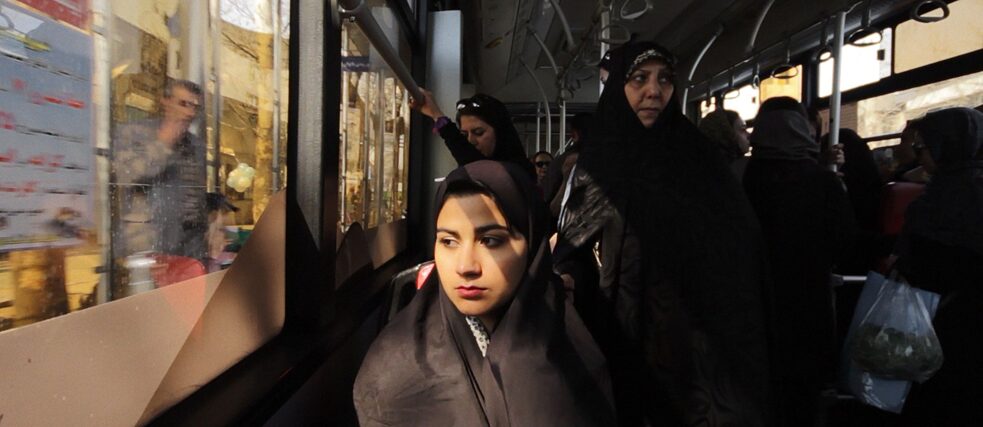Documentary
Haunting melodies from a fractured land

Sreemoyee Singh’s And, Towards Happy Alleys is a love letter to Iran and its people and amplifies the clarion call for revolution Women, Life, Freedom.
By Prathap Nair
Sreemoyee Singh, director of the Panorama section’s most anticipated documentary And, Towards Happy Alleys, says she finds it hard to articulate why she chose Iran for her documentary project. Premiering at the 73. Berlinale to standing ovation and near universal acclaim, the documentary film became an instant favourite among viewers.
“Can you rationalise falling in love? You can’t, that’s what happened to me with Persian cinema,” she admits. “I was twenty one and I didn’t know you could talk about desire like this. Forugh taught me that,” she says referring to the feminist Persian poet Forugh Farrokhzad who lived in the sixties. Inspired by Iranian cinema and poets like Farrokhzad, she took up a doctoral thesis on the subject of Iranian cinema, travelled to Iran, learned Persian and made a documentary, braiding together various themes.
The result, And, Towards Happy Alleys is Singh’s love letter to the country, its rich culture and repressed people who are disallowed many forms of artistic freedom of expression. During the course of seventy five minutes, the documentary hops from one topic to another effortlessly bringing to screens glimpses from Iran, otherwise denied to the world.
Women, Life, Freedom
Briefly relieved from the shackles of censorship, despite facing the probing eyes of Singh’s camera, her subjects open up to her. Panahi confesses to having suicidal thoughts, Mohammad Shirvani talks about the dangers of self-censorship, human rights activist Nasrin recounts her run in with authorities inside the prison in the matter of wearing chador. Now-grown up actresses from Panahi’s earlier films White Balloon (Aida Mohammadkhani) narrate their struggles with authorities who brutally police women’s attire.
Singh admits to having concerns about endangering people’s lives by making them talk candidly for her project so she managed to find a workaround. “The central characters Panahi and Nasrin were chosen because they were already outspoken. Many people featured in the film are not in Iran anymore because people have been leaving the country since the unrest,” she says.
The film opens with Panahi playing a taxi driver to Singh and taking her around Tehran. Panahi, who says he never considered himself a political person, tells her that he believes he cannot stand on the sidelines when there’s turmoil in the society, choosing instead to portray them in his work. After all, cinema is the reflection of society.
Mecca of nose jobs
From artistic freedom to beauty standards, the film covers much ground. Singh meets women who decide to get a nose job. The film claims Iran is the “Mecca of nose jobs.” In a society that wants its women covered up so that they’re nothing more than a homogeneous mass of black-veiled moving objects, opinions on wearing a hijab are still diverse. A young female writer says the freedom to wear a hijab is just as important as the freedom to not wear it. The choice should be that of women.
The consternation of constantly being watched upon was persistent in Iranian society. In one scene, while she was filming in the streets, a little boy around ten on his bike yells at her, “why is your hijab not on your head?” All this makes the viewer queasy, which Singh was aware of and freely expresses that she feels claustrophobic while watching the film now. “I constantly felt like I was being followed,” she admits.
Constant surveillance
In a near dystopian society that puts its people under such surveillance, there exists pockets of freedom. “Forugh‘s tomb, which is located outside the city, is always a hub of activity with people huddling around, singing and lighting candles. It offers respite from the prying eyes of the Islamic police,” she says.
Singh’s fluency in Farsi opens doors for her that would be inaccessible otherwise, even more so because she’s also a singer. Women are forbidden from performing in public in Iran. Singh uses the loophole as a foreigner and performs in private venues and visits girls' schools, encouraging students to sing with her.
As a result, the most exuberant voice in the film is Singh’s physical voice itself. “I was living in a dormitory in Tehran, my roommates would cook for me, I would sing for them. I learned Farsi through songs,” she says.
Between Singh’s singing and Iranian writer Jinous Nazokkar reciting Forugh Farrokhzad’s verses, the film is punctuated with haunting melodies. These voices linger long after the film ends in the viewer’s mind, muffled as they are in their own society. Therein lies the success of Sreemoyee Singh as a filmmaker, bringing these voices to the world at a time when it’s needed most.
About the author
Prathap Nair is an independent cultural journalist based in Düsseldorf, Germany, who covers the Berlinale for major Indian publications.
